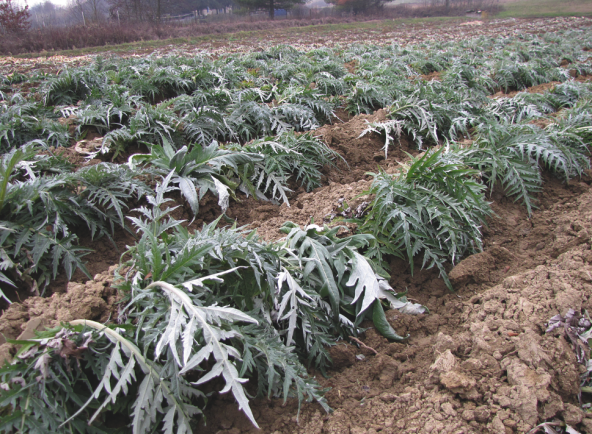
Cardo Gobbo (“hunchback thistle”)
This post is also available in:
 Italiano (Italian)
Italiano (Italian)
The history and tradition of the “hunchback” thistle ( Cynara cardunculus var. “Altilis”) are linked the Belbo River and its banks. Thistles are grown in sandy soils, among Nizza Monferrato, Incisa Scapaccino, and Castelnuovo Belbo. The nickname “hunchback” comes from its type of cultivation: partially buried and thus seeking the light, it bends upwards, assuming the unmistakable humped shape.
This allows the plant to overcome the coldest months and, in particular, makes the stem white, more tender and delicate on the palate, because the ribs lose all traces of chlorophyll.
The work of thistle farmers is part of the very history of the Belbo Valley – a very demanding farming activity which began a hundred years ago with people mainly working in the cold and the mud.
Thistles are sown in May and harvested in October; they are not watered, nor fertilized or artificially treated. In September, when they are already tall and lush, they are folded and covered with earth. After a month, the bleaching is complete: the thistles are unearthed, the outer leaves and the damaged ribs are removed with “purinetta” (a long and thin billhook), while the heart is kept crunchy and sweet.
Thistles are usually enjoyed cooked, but Nizza Monferrato hunchback thistle is also good when eaten raw; it is also a vital ingredient for one of the most iconic dishes in Piedmont: the “bagna cauda”.
This post is also available in:
 Italiano (Italian)
Italiano (Italian)
Contatti
Nizza Monferrato(AT)

